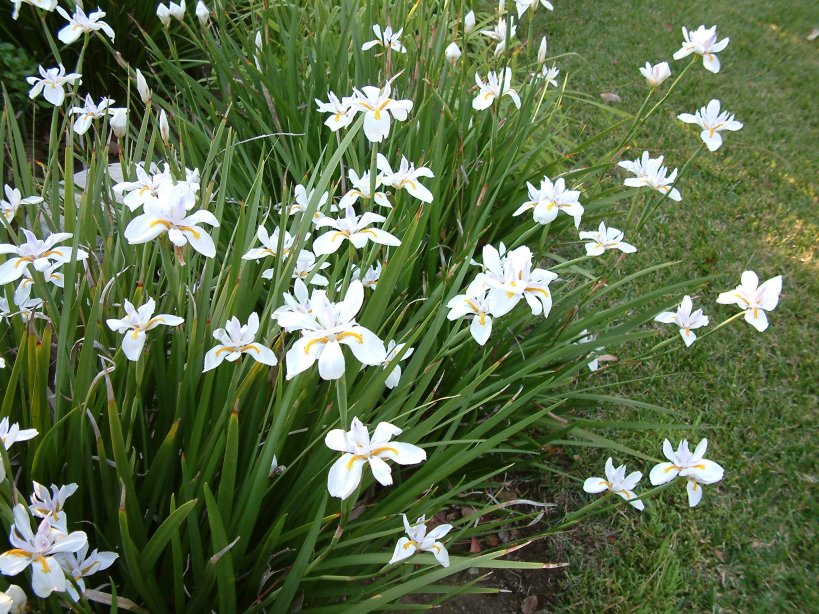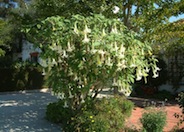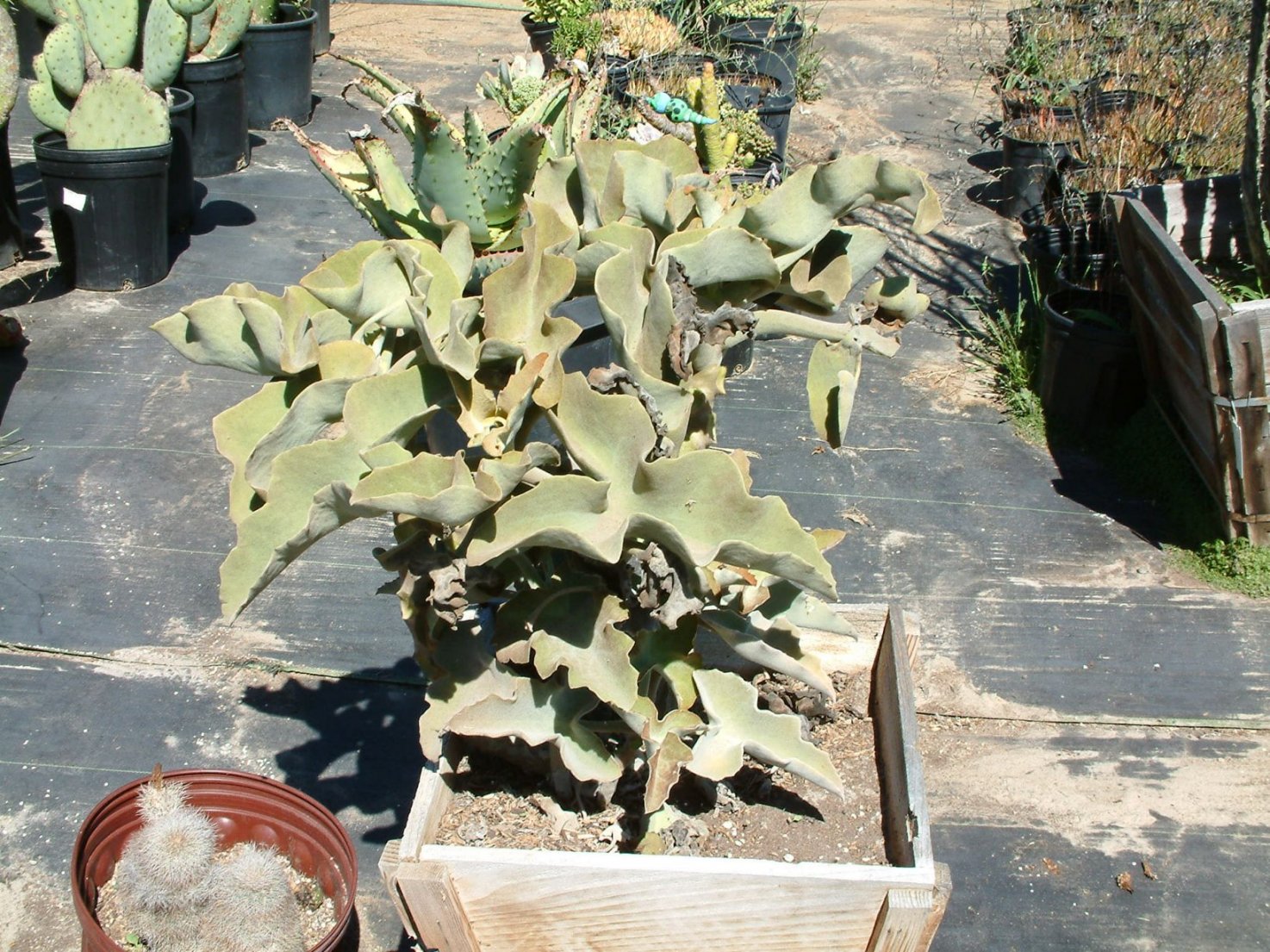
Common name:Butterfly-Iris, Fortnight Lily
Botanical name:Dietes iridioides
This clumping evergreen Iris bears tall, narrow leaves to 30" tall and white flowers marked purple in the center on stalks up to 3' tall. This variety has stiffer, darker foliage than the bicolor form. It requires sun to part shade with little or no summer watering when established. -Monterey Bay Nursery

Common name:Queen Palm
Botanical name:Syagrus romanzoffianum
This palm has a very straight trunk to about 50' in height. It has arching, feathery, bright green, glossy leaves that can be 10'-15' long. It is fragile in heavy winds and a fast grower. It will become damaged in temperature below 24 degrees F.

Common name:Succulents
Botanical name:Aeonium species
These plants are one of the most useful succulents, due to their decorative effects and sculpturesque quality. The branched stems hold a wide rosetta of either light green or purple leaves. The flowers appear in long, clustered form. They need some shade in hotter areas. Prostrate forms are low-growing, and spreading.

Common name:Angel's Trumpet, Datura
Botanical name:Brugmansia X candida
A tender, subtropical shrub that grows to 12', the Angel's Trumpet shows huge, felty leaves and enormous, pendant trumpet-shaped flowers. It has a sweet, heavy fragrance at night. It should be grown in sun to part shade, with average to little summer watering. The growth rate is faster with fertilizing, but it is more prone to insect damage. This variety seems to recover faster from hard frosts. -Montery Bay Nursery

Common name:Felt Plant or Bush, Velvetleaf
Botanical name:Kalanchoe beharensis
This unusual succulent perennial will grow 4'-5' tall and wide. It has thick, fuzzy, gray green to golden leaves with inconspicuous flowers. Although tender to frost, it makes an excellent accent for rock gardens or desert themed landscapes.
Designer:
Photographer: GardenSoft
Incorporate compost 6" into your soil to retain water, reduce compaction, feed earthworms, and provide valuable nutrients to your plants.
Drip and other smart irrigation delivers water directly to roots, allowing no excess water for weeds.